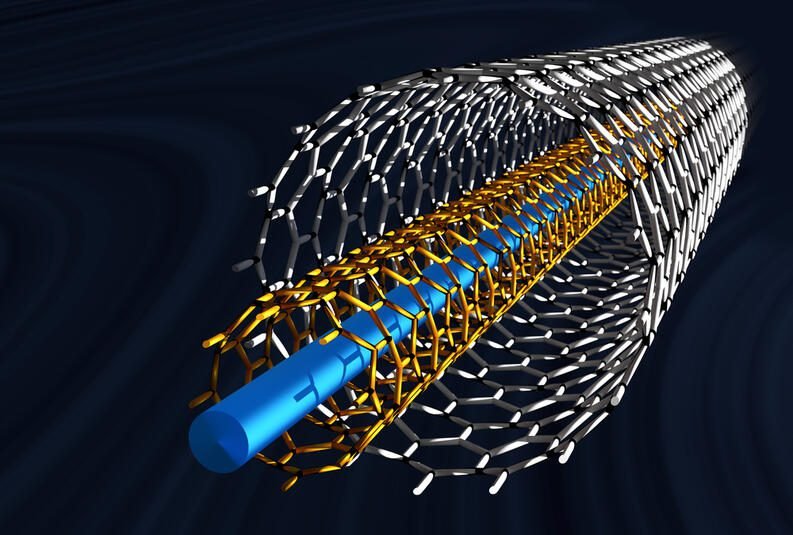The carbon nanotubes are another carbon allotropic form, they have many interesting properties and promise many applications.
What are carbon nanotubes?
They are cylindrical molecules made of carbon atoms with a diameter on nanometric scale and length on micrometric or millimetric scale. They consist of a rolled graphene sheet, linking opposite extremities.



Properties
The carbon nanotube’s properties depend on if it has single or multiple walls and how it’s rolled.
Graphene winding

The two numbers in parentheses (n,m) form the chiral vector (\vec{C}_{h}).
\vec{C}_{h}=n\vec{a}_{1}+m\vec{a}_{2}=(n,m)
Where \vec{a}_{1} and \vec{a}_{2} are unitary vectors, whose modules are equal to 1.

Obtaining the chiral vector \phi formula.
\vec{C}_{h}\cdot \vec{a}_{1}=\left| \vec{C}_{h}\right|\cdot \left| \vec{a}_{1}\right|\cdot cos\phi
\phi=cos^{-1}\left ( \frac{2n+m}{2\sqrt{\left ( m^{2}+n^{2}+mn\right )}} \right )
The tube’s diameter (d).
d=\frac{a\sqrt{3(n^{2}+mn+m^{2})}}{\pi }
Where a is the length of covalent bond between two carbon atoms, which is 1.42 Å (angstrom).
1 Å = 1\times 10^{-10}m
The integral numbers m and n determine if a nanotube is a conductor or a semiconductor.
Other properties of carbon nanotubes (CNT)
- All nanotubes have great tensile strength, they are 100 times stronger than steel with only 1/6 of density.
- Are excellent heat conductors. Thermal conductivity can reach 6000 W/m\cdot K (watt per meter times Kelvin).
- Since they are made of graphene, Young module (measures resistance to elastic deformation) is close to 1000 GPa, it read gigapascals.
- Carbon nanotubes kill the living cells when they come into contact with the latter.
Some application examples
- Composite materials with nanotubes of multiple walls can have higher resistance to weariness and break, with less weight.
- The conductors CNT have better conductivity than copper. They can one day be used in electric energy transmission.
- It’s possible to put semiconductor nanotubes in field effect transistors, to make the connection between drain and source terminals. Creating high-performance smaller circuits.


- Can be used in electrochemical and biological sensors.

Carbon nanotubes still are very expensive to mass manufacture.



